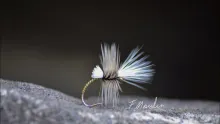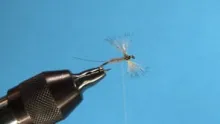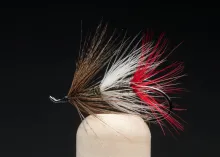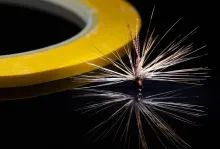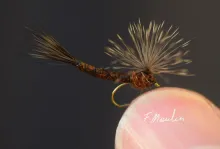Shaped and Stacked; Using Rooster Hackle to Form Dry Fly Wings.
Dry fly wings...Typical materials are...
1.) Quill Slips
2.) Hackle Tips - rooster, hen or other feathers - Think the Adams, Fan Wings...
3.) Duck flank feathers - Wood Duck, Mallard, etc
4.) Hair - Deer, Calf, Elk...
One that has seem to be forgotten but has been used and known about for a long time is using rooster hackle fibers to either "shape" into wings or to "stack" and tie like hair wings.
This video shows both methods and talks a bit about the advantages of rooster hackle for wings.
The description of the method I am most familiar with from Roger Woolley's book, but the practice pre-dates that.
Datus Proper discusses different wing materials and their pros and cons for dry flies. There is no doubt that a hackle is an excellent option. Hackle is water-resistant, gives the impression of wings and translucence, casts as easily as the others, is simple to tie and acquire the material, and lasts for many fish captures. Sidenote...Proper shows what he calls a "Shaped Hackle Pattern" which is essence a comparadun tied with a hackle...a fun fly!
I hope you enjoy it.
- Log in to post comments


